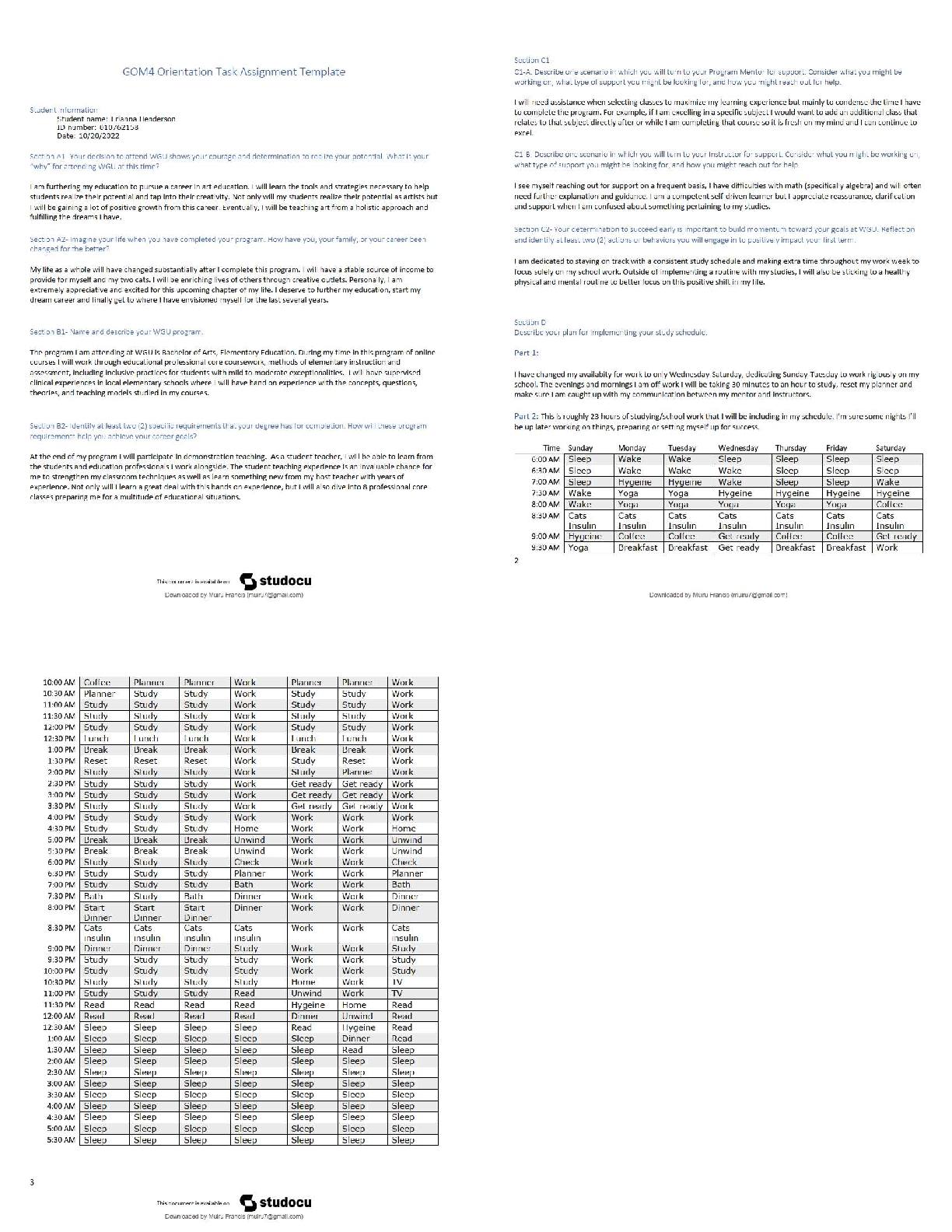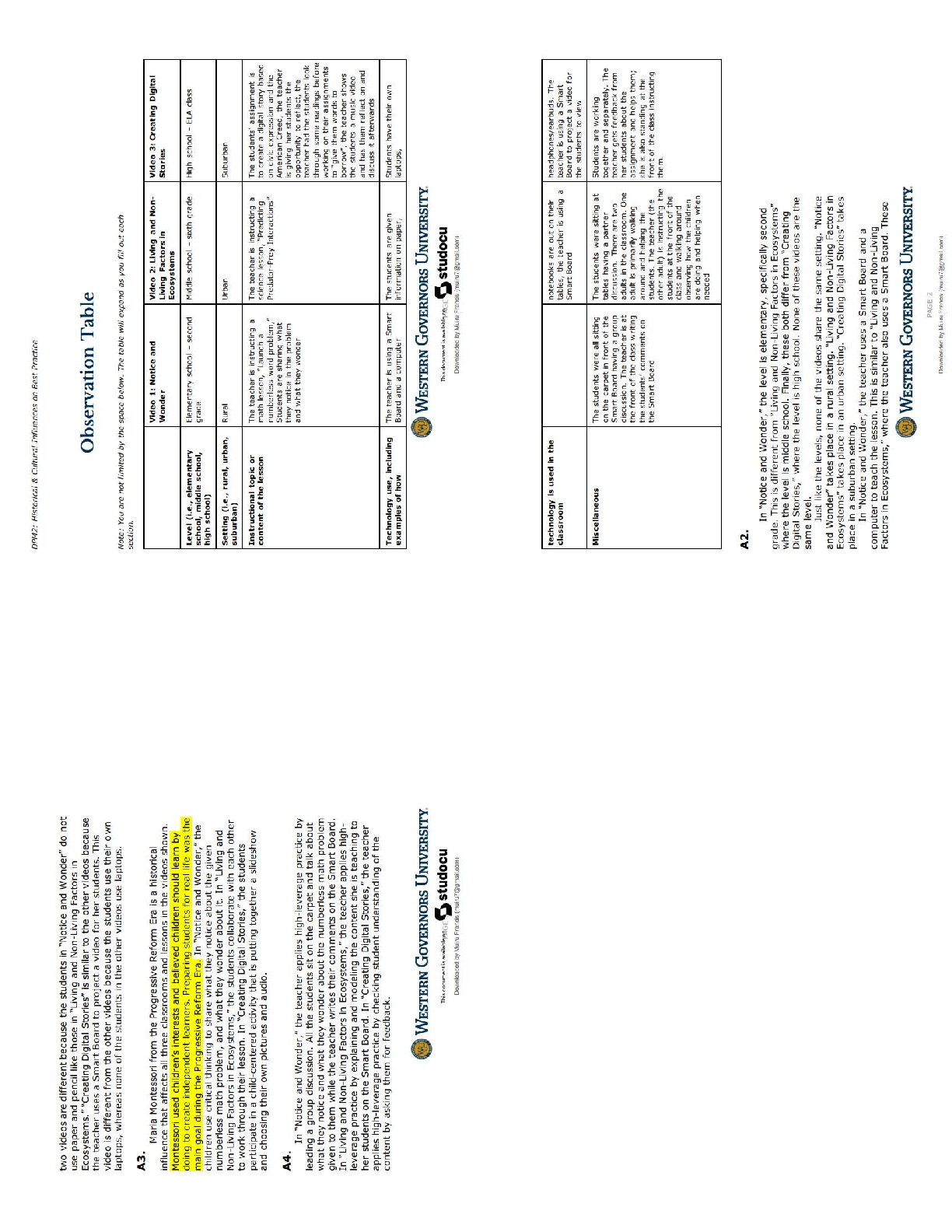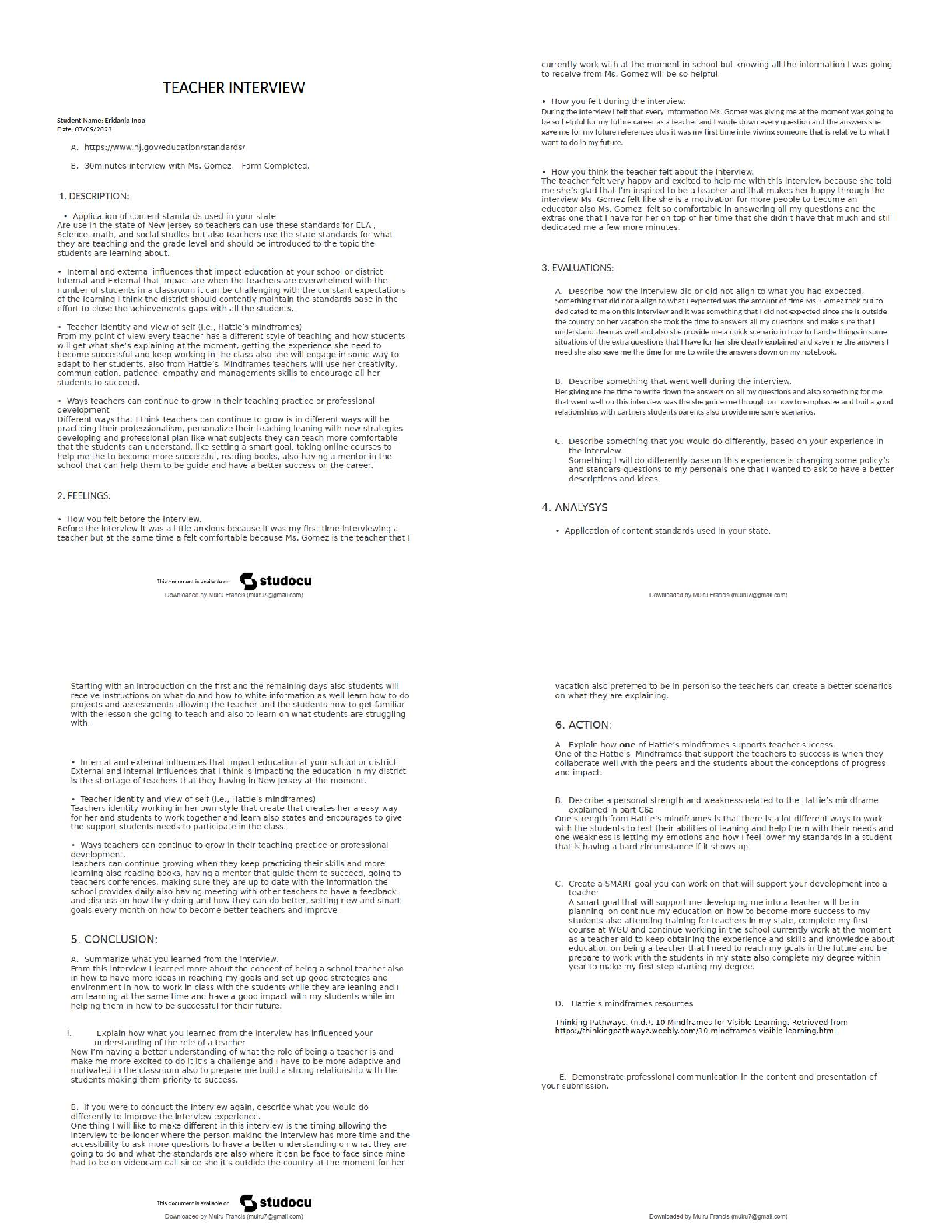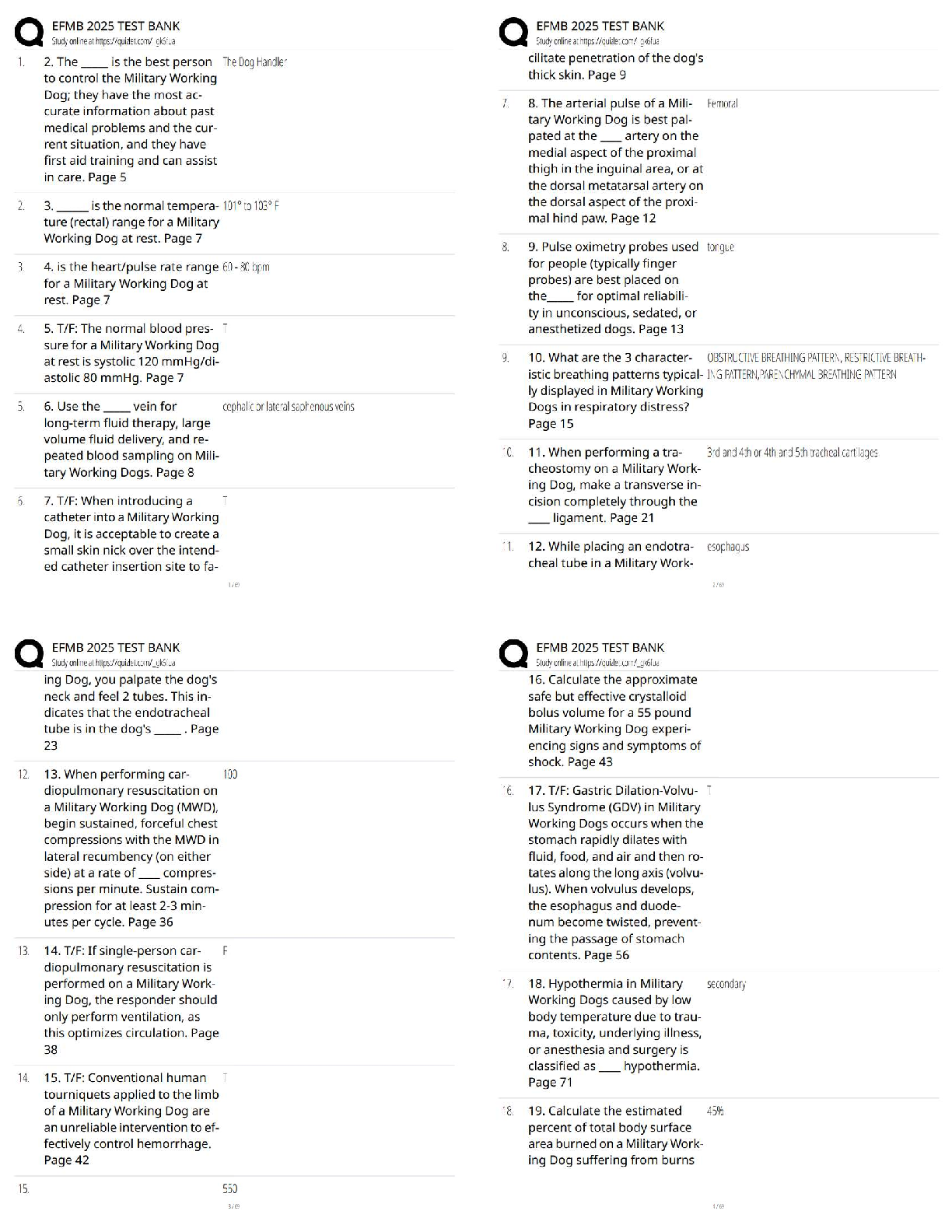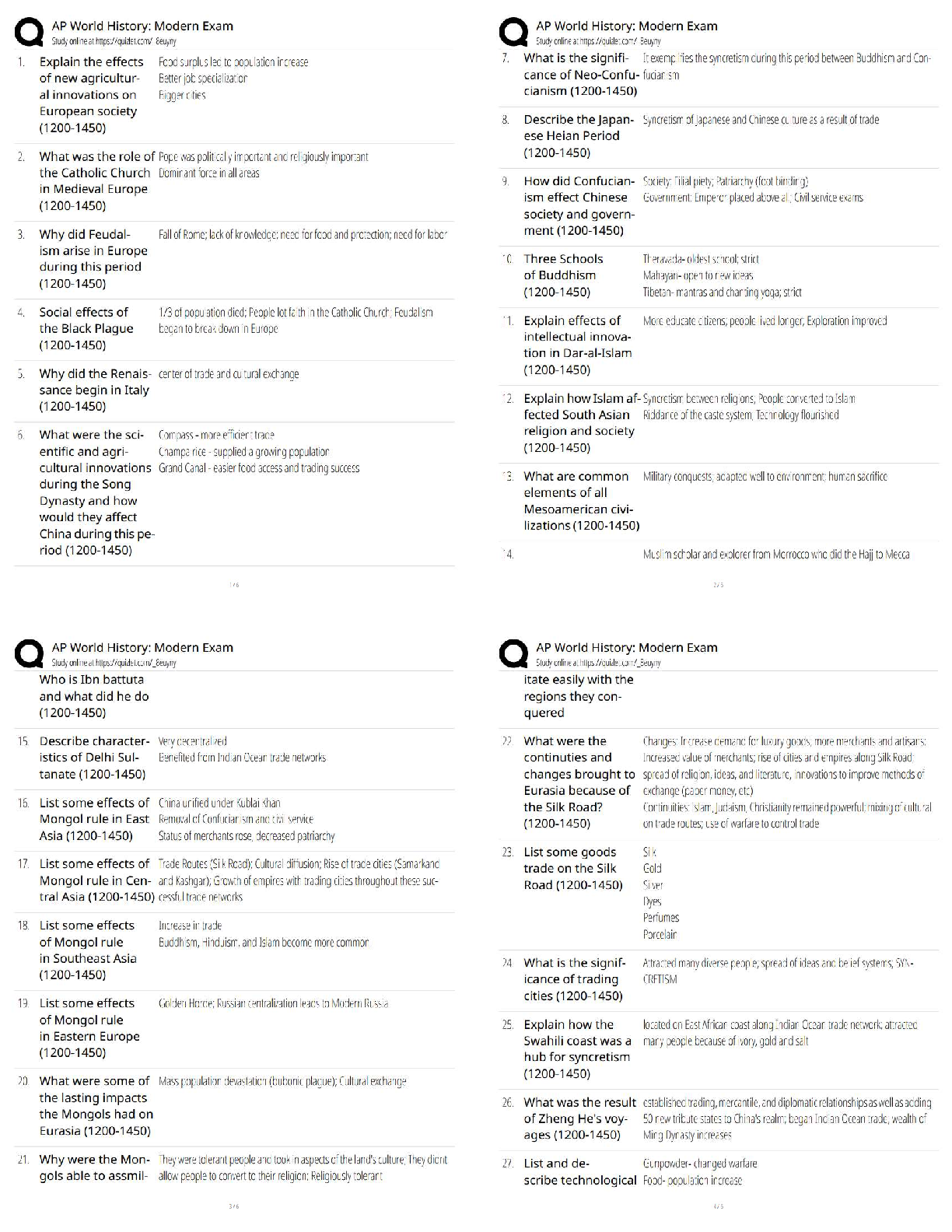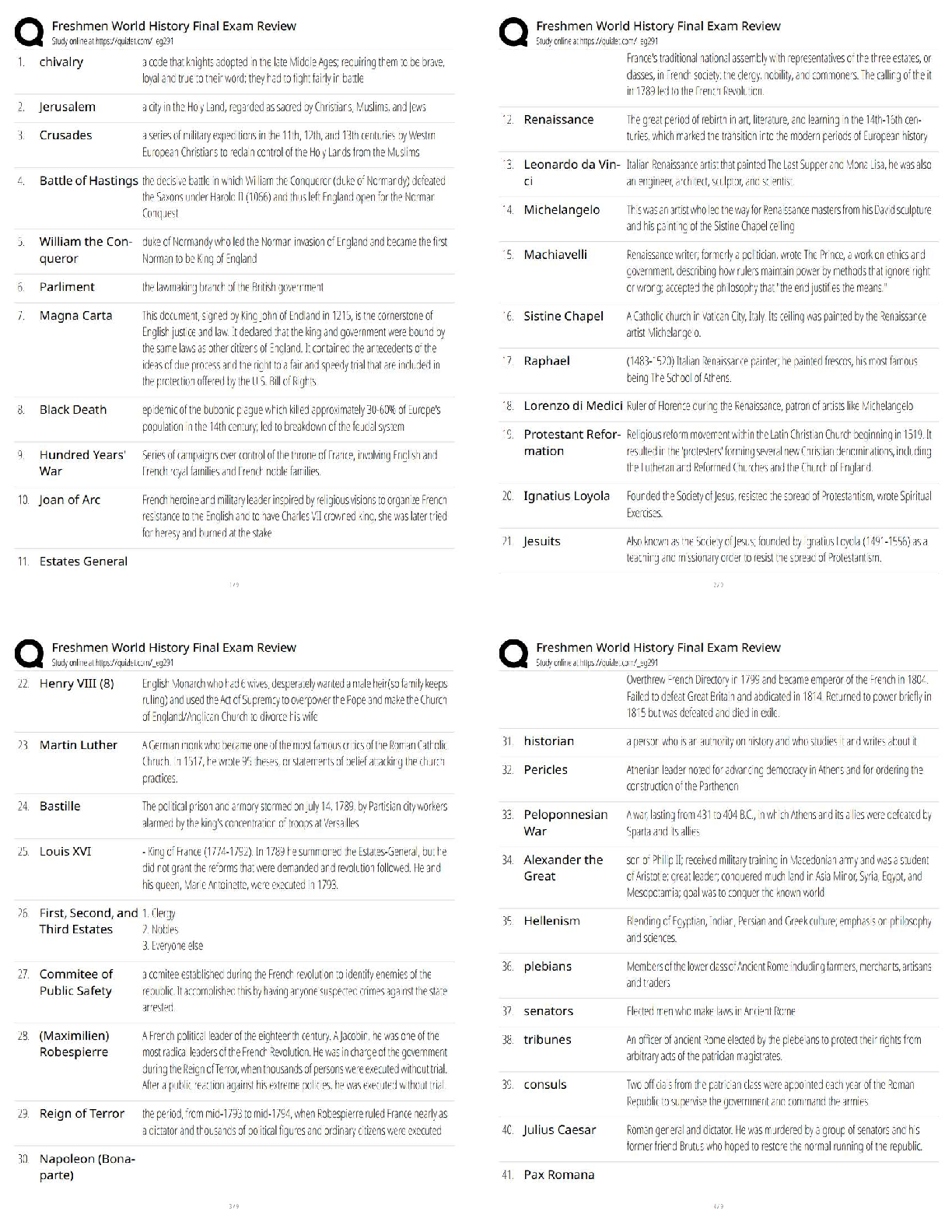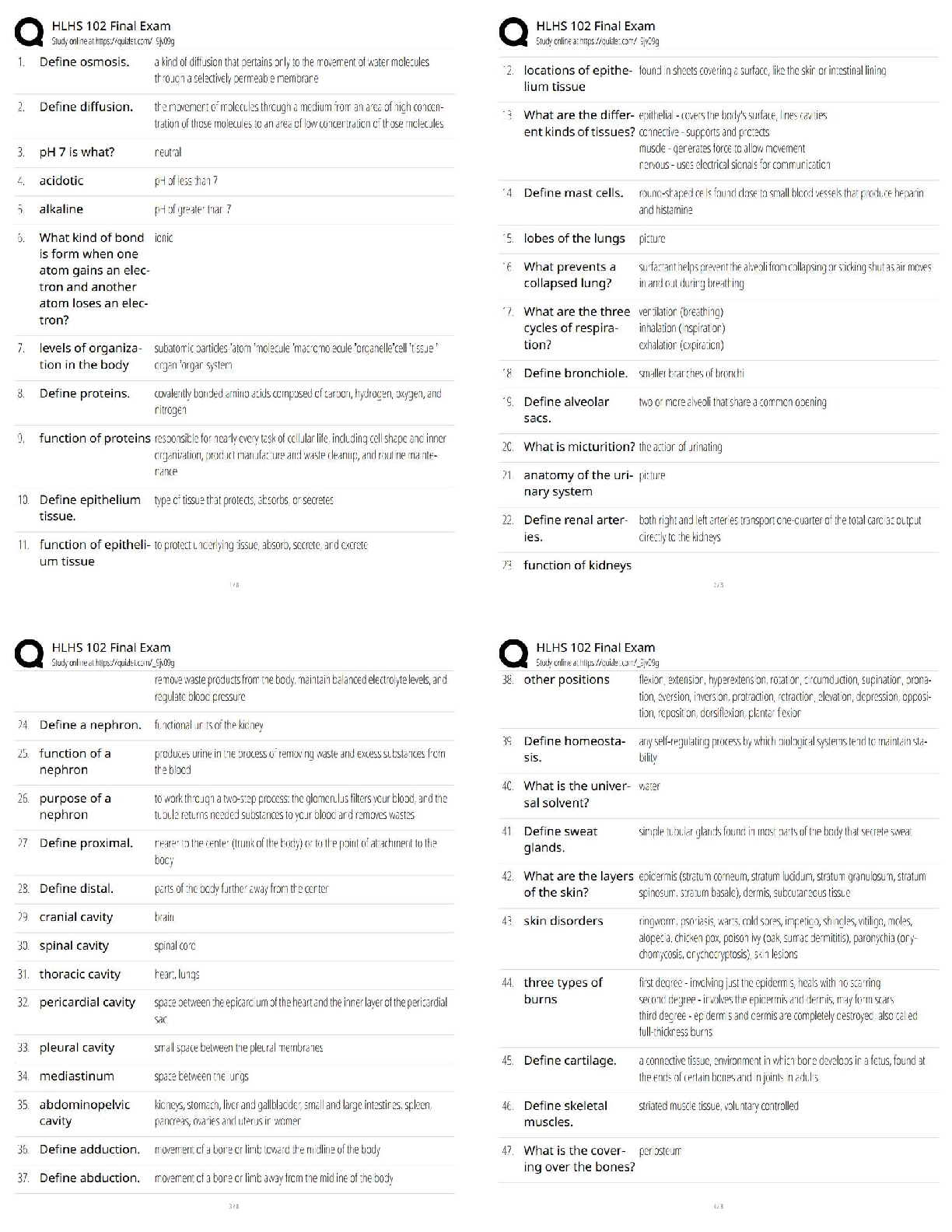CCMA Certification Study Guide for CCMA Certification Exam 2022 Rated A+
Document Content and Description Below
CCMA Certification Study Guide for
CCMA Certification Exam 2022 Rated A
Chief complaint CC Correct Answer-The reason a patient called for help. Also, the patient's response to
questions such as "Wh
...
at's wrong?" or "What happened?"
History of present illness HPI Correct Answer-Explains the chief complaint. A chronological description of
the development of the patient's present illness from the first sign or symptom or from the previous
encounter to the present.
Vital Signs Correct Answer-Temperature, pulse, respiration, and Blood pressure are all ___________
___________.
Normal oral temperature Correct Answer-97.6F - 99.6F
intermittent fever Correct Answer-Fever that alternates between elevated and normal or subnormal
body temperatures.
Remittent fever Correct Answer-fever in which temperature fluctuates greatly but never falls to the
normal level.
Continuous fever Correct Answer-A fever that remains constant above the baseline, does not fluctuate.60-100 BPM Correct Answer-Normal pulse rate
Respirations Correct Answer-Rate, rhythm, and depth are taken into account when measuring what?
Systole Correct Answer-contraction of the heart
Diastole Correct Answer-relaxation of the heart
Anthropometric measurements Correct Answer-Measurement of height, (length rather than height is
used in infants because they cannot stand.), weight, BMI, head circumference in infants, waist to hip, %
of body fat.
Inspection Correct Answer-General appearance, state of nutrition, body habits, symmetry, pasture and
gait, speech.
palpation Correct Answer-to examine by touch
Percussion Correct Answer-physical examination method of tapping over the body to elicit vibrations
and sounds to estimate the size, border, or fluid content of a cavity such as the chest.Ausculation Correct Answer-the act of listening to sounds arising within organs (as the lungs or heart) as
an aid to diagnosis and treatment.
OSHA Correct Answer-a government agency in the Department of Labor to maintain a safe and healthy
work environment
cardiopulmonary resuscitation Correct Answer-an emergency procedure for life support consisting of
artificial respiration and manual external cardiac compression
SHOCK Correct Answer-This is caused by inadequate blood flow to the heart and in turn to the rest of
the body.
Symptoms of shock Correct Answer-Pale, cold, clammy skin
rapid, weak pulse
increased shallow breathing
expressionless face or staring eyes are all ____________ ___ _________.
First aid for Shock Correct Answer-maintain open airway for the victim, call for assistance, keep victim
lying down w/ head lower than rest of body; attempt to control bleeding or other cause of shock if
known; keep victim warm until help arrivesPortal of exit Correct Answer-Method in which a infectious agent leaves the reservoir. Ex: contact with
body fluids such as blood or saliva.
mode of transmission Correct Answer-contact, droplet, air, vehicles, or vectorborne
Portal of entry Correct Answer-A pathway by which the causative agent enters the host. The area in
which a microorganism enters the body. They may be cuts, lesions, injection sites, or natural body
orifices.
Susceptible host Correct Answer-An individual who has little resistance to an infectious agent.
Disinfection Correct Answer-Process used to destroy microorganisms; destroys all pathogenic organisms
except spores, can only be used on inanimate objects. Will not be used for invasive procedures, and will
not be inserted into body orifices nor be used in sterile procedure.
Chemical sterilization Correct Answer-Uses the same chemical used for disinfection, but exposure time
is longer.
Steam sterilization (Autoclave) Correct Answer-uses steam under pressure to obtain higher temperature
(250-254F) with exposure time of 20-40 minutes depending on item being sterilized.
hand washing Correct Answer-What is the most important means of preventing the spread of infection?hand antisepsis Correct Answer-the removal & destruction of transient microorganisms using
antimicrobial soaps.
PPE Personal protective equipment Correct Answer-mask, goggle, face shield, respirator
Intradermal Injection Correct Answer-ID; 15 degrees no aspiration; used for TB test, allergy test, and
local anesthetic
Intramuscular Injection Correct Answer-IM; 90 degress with aspiration
Subcutaneous Injection Correct Answer-SQ; 45 degress
pericardium Correct Answer-protective sac enclosing the heart composed of two layers with fluid
between
Right atrium Correct Answer-The upper right chamber of the heart, where deoxygenated blood is
received from the vena cava and then sent to the right ventricle.
Right ventricle Correct Answer-the chamber on the right side of the heart that receives deoxygenated
blood from the right atrium and pumps it into the pulmonary trunkLeft atrium Correct Answer-the left upper chamber of the heart that receives oxygenated blood
returning from the lungs via the right and left pulmonary veins.
Left ventricle Correct Answer-the chamber on the left side of the heart that receives oxygenated blood
from the left atrium and pumps it into the aorta
Aorta Correct Answer-The largest artery of the body
Pulmonary arteries Correct Answer-The only arteries in the body that carry deoxygenated blood.
pulmonary veins Correct Answer-the only veins in the body that carry oxygenated blood.
atrioventricular valves Correct Answer-Separate the atria and the ventricles. Right sided tricuspid, left
sided mitral
tricuspid valve Correct Answer-between right atrium and right ventricle
mitral valve Correct Answer-between left atrium and left ventricle.Pulmonary valve Correct Answer-between right ventricle and pulmonary trunk.
Aortic Valve Correct Answer-Between left ventricle and aorta
depolarization Correct Answer-sodium rushes into neuron through membrane, potassium ruses out;
results in a positive charge
repolarization Correct Answer-when the K+ ions leave the inside of the axon, making the inside charge
negative. Myocardial relaxation.
SA NODE Correct Answer-the pace-maker of the heart; where the impulse conduction of the heart
usually starts; located in the top of the right atrium just below superior vena cava
AV node Correct Answer-Located at the posterior septal wall at the right atrium just above the tricuspid
valve. There is a 1/10 second delay of electrical activity at this level to allow blood to flow from the atria
to the ventricles.
Lead I Correct Answer-Left arm is positive and right arm is negative (LA-RA)
Lead II Correct Answer-Left leg is positive and right arm is negative (LL-RA)Lead III Correct Answer-Left leg is positive and left arm is negative (LL-LA)
aVR Correct Answer-The right arm is positive and the other limbs are negative
aVL Correct Answer-The left arm is positive and the other limbs are negative
aVF Correct Answer-The left leg (or foot) is positive and the other limbs are negative
V1 Correct Answer-4th intercostal space, right sternal border
V2 Correct Answer-4th intercostal space, left sternal border
V3 Correct Answer-equidistant between v2 and v4
V4 Correct Answer-5th intercostal space, on the left midclavicular line
V5 Correct Answer-5th intercostal space at the anterior axillary line
V6 Correct Answer-5th intercostal space, midaxillary line1mm Correct Answer-1 small square on eKG grid is equal to
5mm Correct Answer-1 large square on EKG grid is equal to
1mv Correct Answer-2 large squares on EKG grid is equal to
.04 seconds or 40m seconds Correct Answer-1 small square on eKG grid is equal to how much time?
.2 seconds or 200m seconds Correct Answer-1 large square on eKG grid is equal to how much time?
1 second or 1000 m seconds Correct Answer-5 large squares on eKG grid is equal to how much time?
25mm per second Correct Answer-The running speed of an EKG is?
Horizontal axis Correct Answer-What represents time on an EKG?
Vertical axis Correct Answer-What represents amplitude on an EKG?P Wave Correct Answer-Deflection produced by Atrial depolarization. Normal range does not exceed
0.11s in duration or 2.55mm in height.
T wave Correct Answer-Deflection produced by ventricular repolarization
QRS complex Correct Answer-Ventricular depolarization
Somatic tremors Correct Answer-Patients tremors or shaking the wires can produce jittery patterns on
the EKG tracing.
Wandering baseline Correct Answer-sweat or lotion on the patients skin or tension on the electrode
wires can interfere with the signal going to the EKG apparatus causing the baseline of the tracing to
move up and down on the EKG paper.
60-cycle interference Correct Answer-can produce deflections occurring at rapid rate that may mimic
atrial flutter. this is caused by electrical appliances or apparatus being used nearby while the tracing is
taken.
[Show More]
Last updated: 3 years ago
Preview 1 out of 21 pages
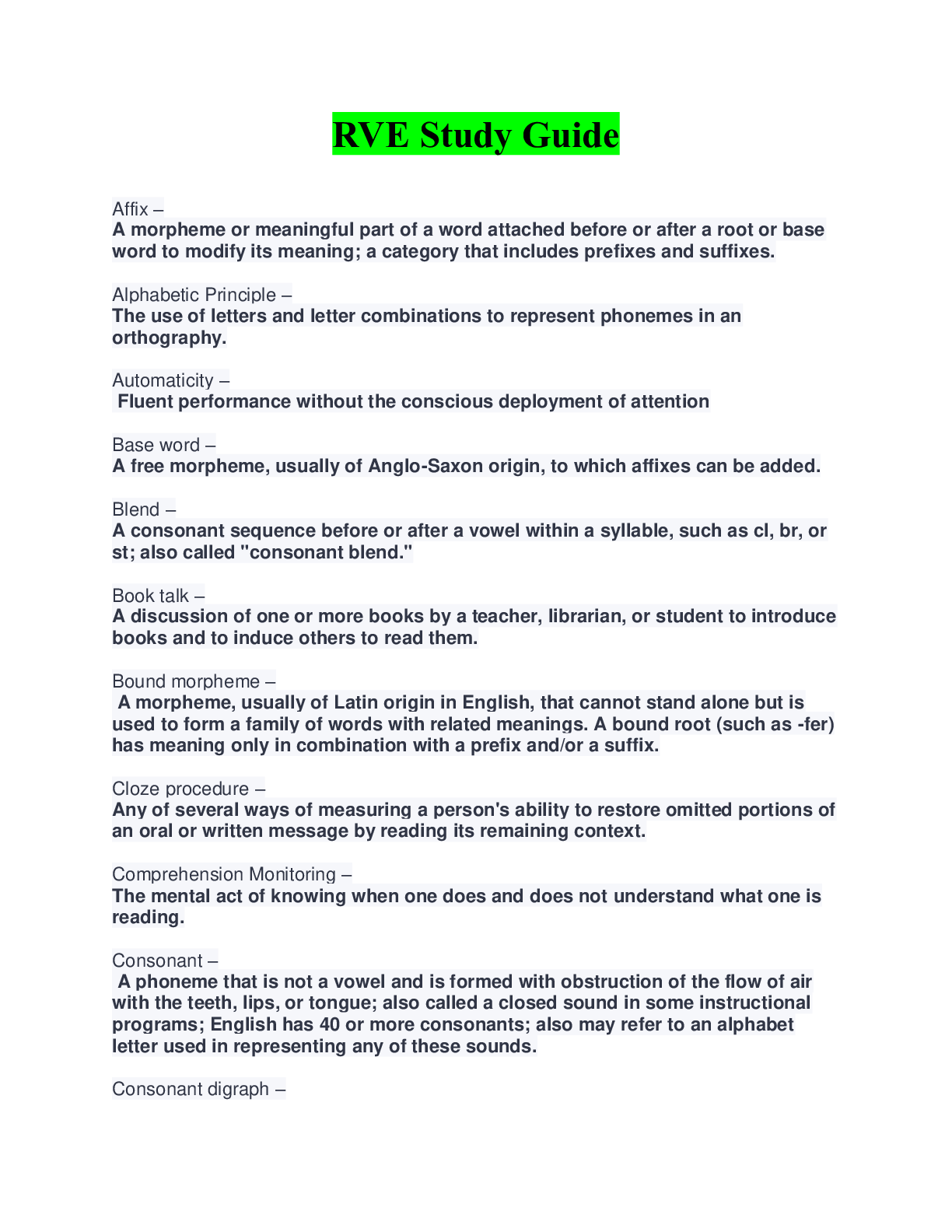


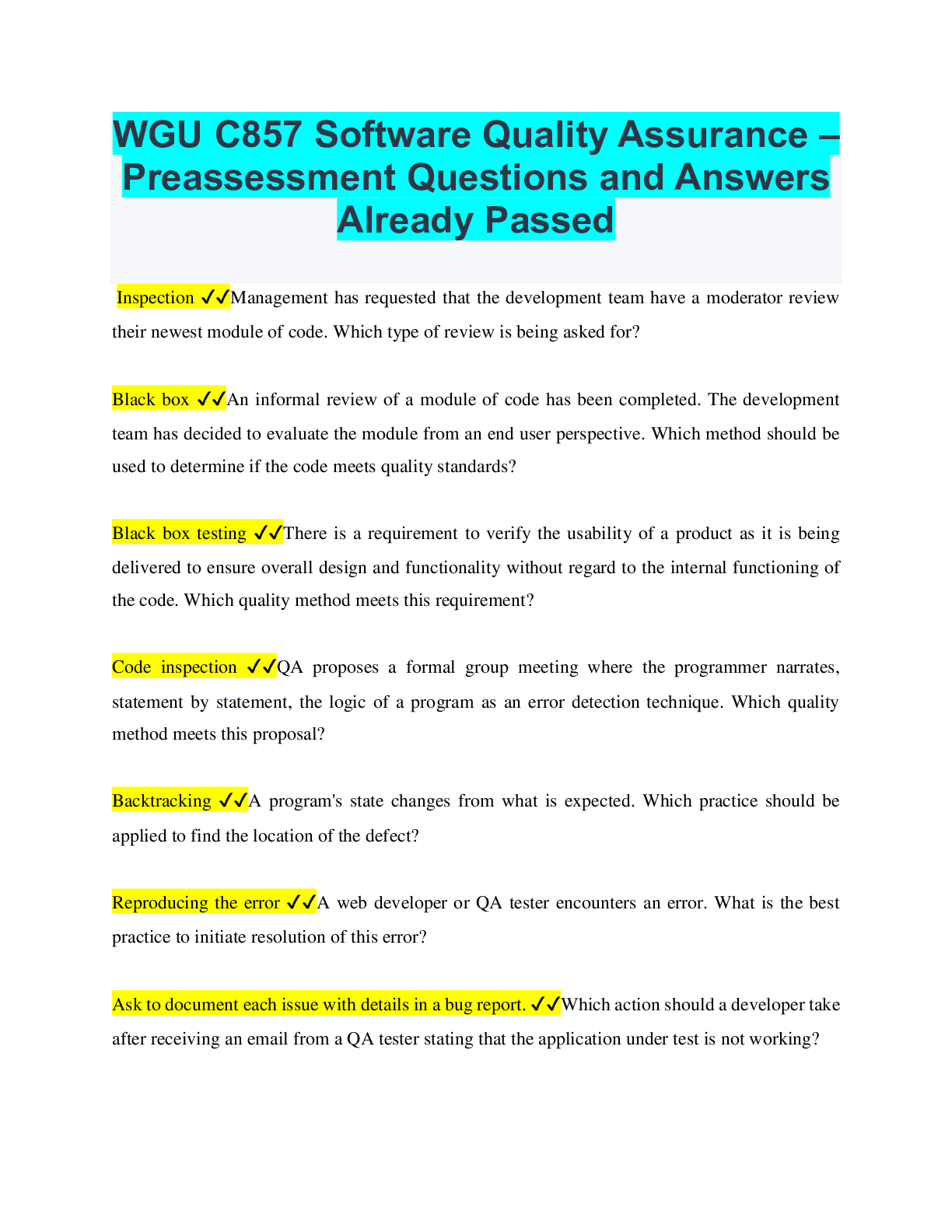
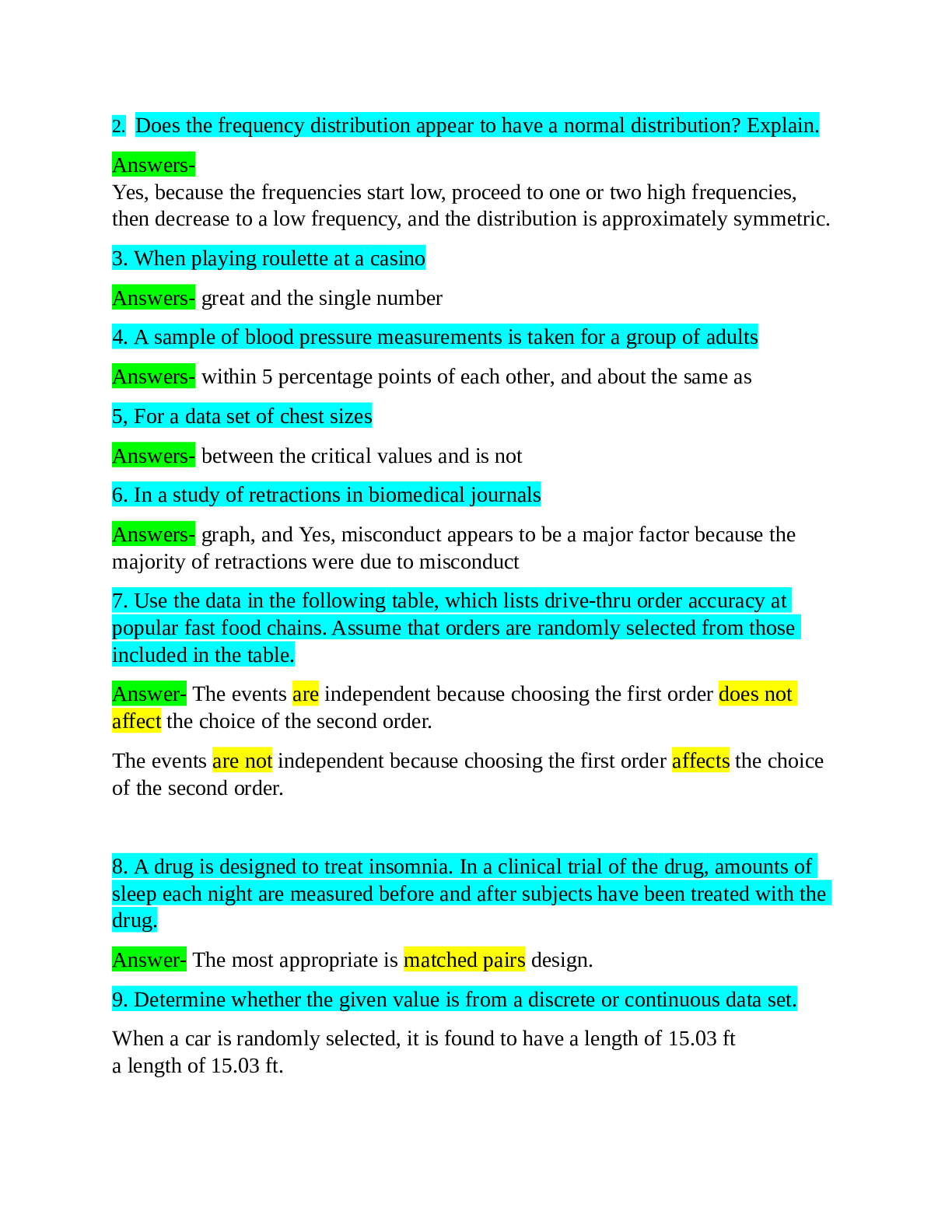
.png)



















